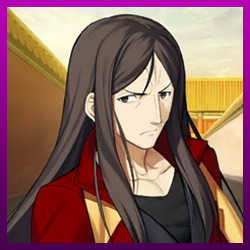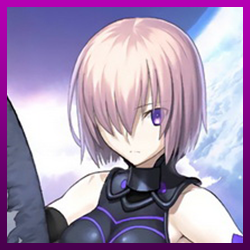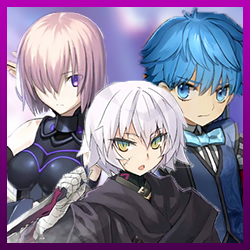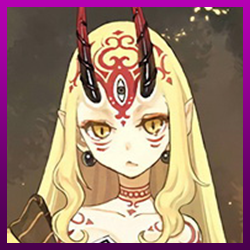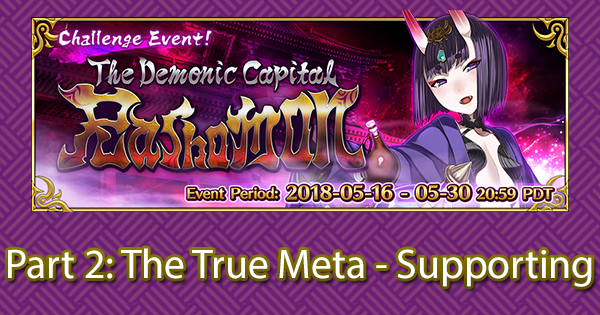
Part 2: The True Meta - Supporting
With fights becoming more difficult, it should come as no surprise that Servants typically rated as quite strong will see more use and for good reason. Max level and grailed Servants particularly overpower many of the normal boss fights with ease. However, when an opponent has such a large amount of HP that it takes multiple Noble Phantasms or massive critical hits to finish the encounter, charging those Noble Phantasms multiple times without help becomes increasingly difficult. Therefore, the cornerstone of most challenge quests are the support Servants. They are the most valuable Servants for any challenge quest and each particular one that is leveled and skilled up opens a wealth of strategic options. Support Servants ensure that your powerful damaging Servants can do what they need to do.
So who are these support Servants? Well, they usually provide team-wide or powerful single target buffs through the use of their skills and Noble Phantasms. Typically they provide this without using up command cards or using them as little as possible. The best support Servants provide not only offensive buffs but also defensive buffs. After all, staying alive during hard encounters is a challenge in and of itself.
There are few Servants that truly fit neatly into the support role. That means options are limited and that the Servants who synergize well with supports are the ones who are typically rated as powerful. For example, Orion can become a veritable Noble Phantasm spamming boss killer with additional arts buffs and Noble Phantasm charging buffs, a function that Orion would not normally be able to do on their own.
Part 2.1: Team Structure
Teams are generally formed in the following way for challenge quests: One Servant will function as the main DPS and possesses mostly buffs that only buff him/her. This Servant will have their command cards prioritized, will typically deal a lot of damage, and possesses class advantage. Some examples of these selfish DPS-types are Servants like Cu Alter, Jeanne Alter, Scathach, Gilgamesh, Rama, Robin Hood.
The second Servant in the line-up will function as a pure support, providing buffs to the team and basically being a Servant battery. A core part of their kit is being able to provide at least a good measure of survival to the entire team. Command cards are avoided (unless for Art-chains) and class advantage is unimportant. Most of these Servants are Casters and can sometimes even be fielded against Riders. Think of Servants like Waver, Tamamo, Hans, Mash, David and so on.
The third slot is where things can vary a little depending on a player’s Servant roster. The most popular option, and the strongest one, is to field another support Servant. Yes, even if the turn count is limited in raid events, bringing more buffs can lead to a more consistent and powerful performance. But another option is to bring a second DPS that can play well with the first Servant. It is not ideal, as it requires splitting command cards, attention and buffs between two Servants. Instead, if more damage is a priority, consider fielding a hybrid Servant. These Servants do offer some good offense but also come with a number of team buffs or buffs for the main DPS. They don’t require as much attention and often synergize well with both the support and the main DPS. Some examples of hybrids are: Nero Bride, Elisabeth, Helena, Edison, and Caesar.
Part 2.2: Team Cost & Craft Essences.
What team compositions are even possible is limited by the amount of team cost available. Especially for newer master, fielding multiple golden rarity Servants may severely limit what Craft Essences, if any, can be equipped. Thus, some hard decisions need to be made when constructing any team and if some Servants are even going to be equipped with a craft essence. As a general rule of thumb, invest most of the available team cost in the frontline team. Furthermore, ensure that at least the frontline Servants have the best Craft Essences equipped that are available for the fielded Servants in question. Craft Essences like Prisma Cosmos or A Fragment of 2030 are often essential for keeping rotations steady. If you need advice in which Craft Essence to pick, please have a look at the Craft Essence recommendations on the Servant pages. A well crafted frontline may not even have anyone perish before the fight is over.
Some events however, limit just what Craft Essences can be picked. Raid events in particular often introduce Craft Essences that boost the damage of Servants by a significant amount whether team-wide or personal. Equipping these is often a prerequisite of even standing a chance of clearing a raid or challenge quest. However, should one equip these to their entire team, a grand total of 60 cost will be used up before any Servants are even slotted in. For events with Craft Essences like these, having access to low cost support Servants can make life significantly easier. Mash in particular can assist in reducing any team cost by virtue of being free to field. Do note that the incremental benefit of fielding more and more of these Craft Essences lessens with each equipped to the team. Going from 500% extra damage to 550% extra damage may not actually be worth the cost. Fielding a different Craft Essence, for example one that gives additional stars to the frontline team, may be a better option.
Another common issue that arises in event like these is whether to Limit-Break the event damage Craft Essences. While it does depend on what roster is available to make use of the Craft Essences, generally it is a fairly safe decision to Limit-Break the Craft Essences that boost individual performance. Usually Servants that have these equipped are kept alive as long as possible while the damage boost from being limit broken is quite substantial too. On the other hand, it is better to wait until a sixth or seventh copy drops before Limit-Breaking the team-wide damage boost Craft Essences. The damage loss to the team would be very substantial otherwise as multiple separate copies provide more of damage boost than a single limit broken copy .
Part 2.3: Managing the Backline
Not all strategies will unfold as planned and some of the hardest challenge quests require extracting the maximum possible amount of damage and durability out of a team. Having contingencies in place for when the quest turns sour is what the backline is for. Even before starting the challenge quest, it is possible to make some educated guesses as to who is going to perish first. If the main DPS is especially vulnerable, consider lining up a replacement in the fourth slot. If instead, a support is likely to fall, bring in another in order to keep the main DPS healthy and protected. If no such guesses can be made, slotting in a hybrid is always an option too. The fifth slot should similarly be a replacement for who will fall afterwards. Preferably throughout this plan, the main strategy can continue uninterrupted or even gain a boost by having access to new skills. While Craft Essences are welcome to the backline, they are not always necessary. Consider equipping some lower rarity options like Dragon’s Meridian if there is some team cost left.
The final slot is the only slot that substantially differs in that some Servants can make some impressive last stands. Through the use of Evasion, Invulnerability and Guts these Servants can last for a while longer by themselves. Sometimes, this last stretch of damage can be just enough to clinch a win. Servants like Heracles, Nero or Cu Chulainn excel at these last man standing jobs.
Part 2.4: Mystic Codes
The final decision to be made regarding team structure is the attire of the master. Which Mystic Code to use depends entirely on what final strategy the player has decided to pursue. A well placed Gandr can buy enough time to bring defenses back up while the Eye of Medjed may immediately allow for all skills to be recast. In order to help you select the right Mystic Code from among the basic options, see the table below. Not all Mystic Codes are included in this overview however. Please see the general overview on Mystic Codes for those as some had limited availability.
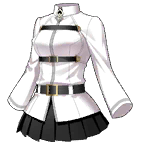 |
|
|---|---|
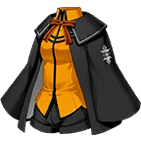 |
|
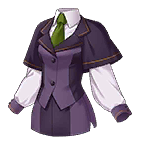 |
|
 |
|
Part 2.5: In Conclusion
When creating the structure of your team, consider the following:
- For the hardest content in the game it is the support Servants who really shine.
- Therefore a challenge team should contain at least one support Servant in the frontline.
- Preferably the frontline will look as follows: Main DPS + Support + either a Support or Hybrid.
- Most of the available team cost should be given to the front line.
- Prioritize Craft Essences for the frontline over those in the backline.
- The backline should be a contingency plan, who do you expect to see die first and who can replace them?
- Select a Mystic Code that enhances your main strategy or covers up a weakness. If in doubt, the Chaldea Combat Uniform is a safe option.



